Over the past decade, but more so in recent years, we have seen more and more machinery manufacturers working on the development of integrated control measures where herbicide use is minimised.
The tightening legislation around chemical usage on farms, increasing herbicide resistance, a reduced number of new herbicide introductions and the sheer cost of chemicals are the main factors driving this change.
For example, the Farm to Fork strategy, set out by the European Union, has a target of reducing pesticide use by 50% by 2030.
In order to meet these stringent targets, radical and widespread change is needed.
With this, we see weed control going through what you could almost call a mini-revolution.
There are largely three categories of post-emergence weed destruction methods that can be used as part of integrated weed control strategies, including mechanical weed control, novel physical approaches (thermal or electrical, etc) and targeted application of herbicides.
In the last few years, mechanical weed control has come back into fashion in a big way.
Today, we see almost all key European tillage machinery manufacturers now claiming to have a solution. However, this isn’t a one size-fits-all solution.
The second weeding technology solution is spot-spraying, where weeds are only sprayed where they are identified.
The concept of identifying and spraying weeds has been around for at least 30 years, but bringing it to reality has been a slow process. However, its progress has accelerated in recent years.
These systems use similar weed-sensing approaches using one or more camera-type sensors which are generally either RGB (visible spectrum) or multispec sensors (additional non-visible wavelengths) to help identify the weeds.
Demonstration
Farmhand, the importer of brands such as Krone and Amazone, organised a working demonstration day in Laois last week with CultiWise.
CultiWise is a Czech company with 30 employees in business for the past eight years. The company describes itself as a precision agriculture platform utilising artificial intelligence (AI) to integrate multiple data sources for efficient farming.
The farm management software platform aims to reduce costs and increase yields, through the use of variable rate fertiliser and targeted chemical applications, while aligning with sustainable practices and regulatory changes.
These targeted chemical applications include desiccation, growth regulators and fungicides.
It says it is compatible with most agricultural machinery, and offers cloud-based, AI-driven data analysis and a pay-as-you-go pricing model.
How does it work?
The system generates the prescription maps through two methods. Firstly, through satellite imagery and, secondly, through the use of drones. Satellite imagery is good enough for creating prescription fertiliser maps, but drone imagery is needed for variable rate herbicide applications.
Through the satellites, CultiWise offers both a basic and premium option. The basic version allows farmers to monitor their crops and look at actual and historical data.
Through the basic version, images are taken in 10 m/px resolution, with images generally taken two to three times per week.
The basic satellite imagery is offered at no cost and the company encourages all farmers to sign up and try it out for free to get a handle on how it works and the benefits it can bring.
By opting for premium satellites, users get the same features but gain access to significantly improved image resolution (up to 0.5m/px), allowing for a clearer, more detailed view of fields.
Instead of waiting for periodic updates, premium users will receive daily imagery, ensuring the most up-to-date information.
The other snag is that creating variable rate fertiliser maps for fields under 5ha (12.4ac) is only available on premium, while images at lower resolution can be impacted by higher cloud cover on the basic package.
One of the standout features of premium is the enhanced management zone detailing, allowing users to refine strategies for the specific zones within fields.
The drone option
CultiWise uses the well-known drone manufacturer DJI, coupled with an RGB camera and multi-spectrum camera, to identify the weeds. This special drone takes multiple pictures in one pass over the crop. Flying the drone at a height of 60 metres, it captures 80 metres wide of the crop underneath. The company says it would easily capture 200ha (495 ac) of crops per day.
The drone is obviously specialised, and is expensive, costing €34,600 plus VAT. However, the company says that it doesn’t expect farmers to buy these drones, but rather that contractors or farm advisers would ideally carry out this type of work.
After flying the drone over the field, users upload the raw imagery to the CultiWise platform. The company’s cloud-based system will stitch the images together, creating an orthophoto map.
Using this map, CultiWise generates a prescription map targeting only the weed-infested areas for treatment.
In terms of the turnaround time for the prescription map creation, CultiWise said that its cloud processing is efficient. It aims to deliver the application map within 24 hours after the data upload.
View from the cab - through the Fendt tractor, the sprayer was being operated through IsoBus while the Amatron terminal displayed the variable rate map.
How it targets individual weeds
In terms of targeted spraying, CultiWise said its database has seven years of research, which it says can apply spray in ‘green on brown’ and ‘green on green’ scenarios.
The use of ‘green on brown’ technology has been commercialised for a number of years. In this application, less is being asked of the sensor and, for example, weed discrimination identifies green growth in a fallow or stubble background. This could be used to control glyphosate application, for example, with significant chemical use reductions possible.
Picking weeds out within a green growing crop is much more challenging than ‘green on brown’ spraying.
The recognition system is trained to recognise weeds within crops, by using the AI database where thousands of images of known weed types are presented to the weed recognition software.
The scanning system then compares the images to its library of information (such as shape, colour, texture, etc) to identify individual weeds and spray them.
Up to now, to improve weed detection, sprayers have been directly fitted with technology such as hooded booms and camera systems, with LED lighting, so that the captured images/crop reflectance was not impacted by poor or variable natural light.
The high artificial light levels also ensured that the multiple camera units operated at a fast shutter speed, guaranteeing high-quality images for good weed detection and accurate positioning to ensure precise spraying.
Instead, CultiWise is adamant that it can capture all of this by using its hi-tech drone.
These targeted chemical applications include desiccation, growth regulators and fungicides.
Sprayer/spreader compatibility
Once the variable rate prescription maps have been created by CultiWise, it is downloaded on to a USB stick and then inserted into the control box or the IsoBus controls of the sprayer/fertiliser spreader.
In order for the sprayer to take the prescription map, it needs to have section control at a minimum.
In an ideal situation for the highest level of precision, the sprayer would be equipped with individual single nozzle control with RTK steering (2.5cm accuracy).
In terms of variable rate fertiliser application, again it’s a hi-tech spreader that’s needed with a minimum of section control.
The basic system is free to use, until you decide to create variable rate maps from it. The premium system has a yearly subscription fee of €4/ha.
Once a user decides to create variable rate maps from the satellite, costs range from €3/ha to €5/ha per map created.
From the drone, it costs €5/ha to upload and process the prescription maps. The company works on a pay-as-you-go system, with payment due at the end of each month. 
Cultiwise uses the well-known drone manufacturer DJI coupled with an RGB camera and multi-spectrum camera to identify the weeds.
CultiWise has over 1,000 users across Europe, who look after 250,000ha of crops.
The highest uptake to date has been in Denmark, while John Deere has taken on the distribution in the UK. CultiWise is currently present in 11 countries and Farmhand will be taking it on for the Irish market.
The company has published figures on potential cost savings by using its system. On trials carried out from 2017-2023 on winter wheat, it claims to be able to save 60.6% (€36/ha) on a typical herbicide programme.
Meanwhile, on trials from 2018 to 2023, on potatoes over a five-part herbicide programme, it claims to be able to offer a 38% (€108/ha) savings.
Potential savings will obviously vary depending on a multitude of factors, with scale also being a key factor. In Ireland, leaving aside the obvious use for vegetables and cereals, it may have huge potential for grassland spraying. Take for example docks, the major weed of intensively managed grassland. If this system could work on grassland to target specific weeds, which CultiWise says it can, it could become very popular, a lot quicker than people may expect.
The biggest challenge will be to get contractors or farm advisers to purchase the drones to carry out the more specialised aspect of the job. 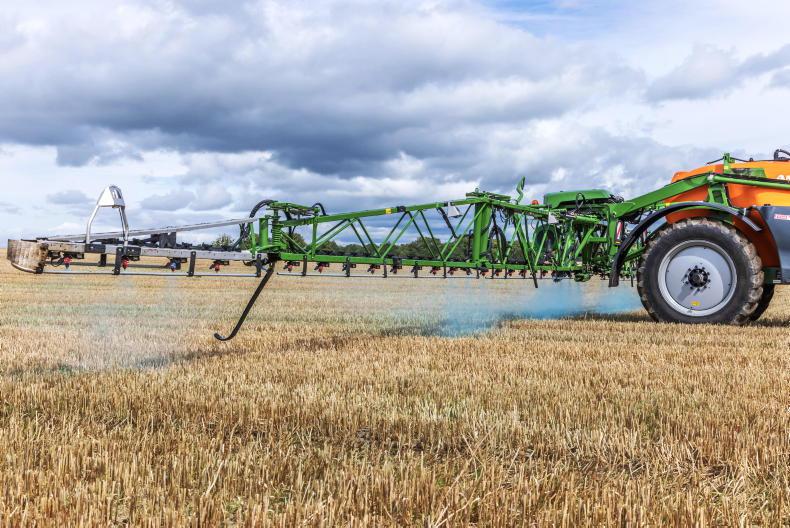
In terms of targeted spraying, CultiWise said its database has seven years of research which it says can apply spray in ‘green on brown’ and ‘green on green’ scenarios.

A close-up of the prescription map on the Amatron terminal.
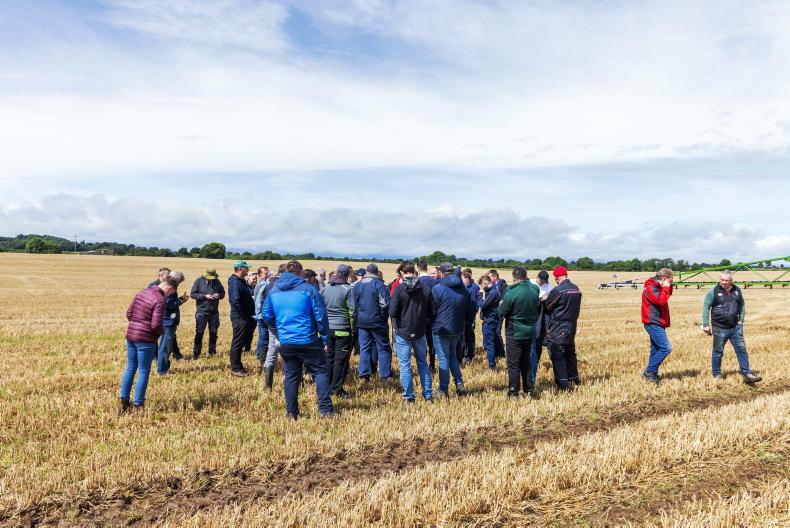
A big crowd attended the demo.
CultiWise generates prescription maps through either satellite or drone imagery.Drone imagery is needed for variable rate chemical applications.These targeted chemical applications include desiccation, growth regulators and fungicides.
Over the past decade, but more so in recent years, we have seen more and more machinery manufacturers working on the development of integrated control measures where herbicide use is minimised.
The tightening legislation around chemical usage on farms, increasing herbicide resistance, a reduced number of new herbicide introductions and the sheer cost of chemicals are the main factors driving this change.
For example, the Farm to Fork strategy, set out by the European Union, has a target of reducing pesticide use by 50% by 2030.
In order to meet these stringent targets, radical and widespread change is needed.
With this, we see weed control going through what you could almost call a mini-revolution.
There are largely three categories of post-emergence weed destruction methods that can be used as part of integrated weed control strategies, including mechanical weed control, novel physical approaches (thermal or electrical, etc) and targeted application of herbicides.
In the last few years, mechanical weed control has come back into fashion in a big way.
Today, we see almost all key European tillage machinery manufacturers now claiming to have a solution. However, this isn’t a one size-fits-all solution.
The second weeding technology solution is spot-spraying, where weeds are only sprayed where they are identified.
The concept of identifying and spraying weeds has been around for at least 30 years, but bringing it to reality has been a slow process. However, its progress has accelerated in recent years.
These systems use similar weed-sensing approaches using one or more camera-type sensors which are generally either RGB (visible spectrum) or multispec sensors (additional non-visible wavelengths) to help identify the weeds.
Demonstration
Farmhand, the importer of brands such as Krone and Amazone, organised a working demonstration day in Laois last week with CultiWise.
CultiWise is a Czech company with 30 employees in business for the past eight years. The company describes itself as a precision agriculture platform utilising artificial intelligence (AI) to integrate multiple data sources for efficient farming.
The farm management software platform aims to reduce costs and increase yields, through the use of variable rate fertiliser and targeted chemical applications, while aligning with sustainable practices and regulatory changes.
These targeted chemical applications include desiccation, growth regulators and fungicides.
It says it is compatible with most agricultural machinery, and offers cloud-based, AI-driven data analysis and a pay-as-you-go pricing model.
How does it work?
The system generates the prescription maps through two methods. Firstly, through satellite imagery and, secondly, through the use of drones. Satellite imagery is good enough for creating prescription fertiliser maps, but drone imagery is needed for variable rate herbicide applications.
Through the satellites, CultiWise offers both a basic and premium option. The basic version allows farmers to monitor their crops and look at actual and historical data.
Through the basic version, images are taken in 10 m/px resolution, with images generally taken two to three times per week.
The basic satellite imagery is offered at no cost and the company encourages all farmers to sign up and try it out for free to get a handle on how it works and the benefits it can bring.
By opting for premium satellites, users get the same features but gain access to significantly improved image resolution (up to 0.5m/px), allowing for a clearer, more detailed view of fields.
Instead of waiting for periodic updates, premium users will receive daily imagery, ensuring the most up-to-date information.
The other snag is that creating variable rate fertiliser maps for fields under 5ha (12.4ac) is only available on premium, while images at lower resolution can be impacted by higher cloud cover on the basic package.
One of the standout features of premium is the enhanced management zone detailing, allowing users to refine strategies for the specific zones within fields.
The drone option
CultiWise uses the well-known drone manufacturer DJI, coupled with an RGB camera and multi-spectrum camera, to identify the weeds. This special drone takes multiple pictures in one pass over the crop. Flying the drone at a height of 60 metres, it captures 80 metres wide of the crop underneath. The company says it would easily capture 200ha (495 ac) of crops per day.
The drone is obviously specialised, and is expensive, costing €34,600 plus VAT. However, the company says that it doesn’t expect farmers to buy these drones, but rather that contractors or farm advisers would ideally carry out this type of work.
After flying the drone over the field, users upload the raw imagery to the CultiWise platform. The company’s cloud-based system will stitch the images together, creating an orthophoto map.
Using this map, CultiWise generates a prescription map targeting only the weed-infested areas for treatment.
In terms of the turnaround time for the prescription map creation, CultiWise said that its cloud processing is efficient. It aims to deliver the application map within 24 hours after the data upload.
View from the cab - through the Fendt tractor, the sprayer was being operated through IsoBus while the Amatron terminal displayed the variable rate map.
How it targets individual weeds
In terms of targeted spraying, CultiWise said its database has seven years of research, which it says can apply spray in ‘green on brown’ and ‘green on green’ scenarios.
The use of ‘green on brown’ technology has been commercialised for a number of years. In this application, less is being asked of the sensor and, for example, weed discrimination identifies green growth in a fallow or stubble background. This could be used to control glyphosate application, for example, with significant chemical use reductions possible.
Picking weeds out within a green growing crop is much more challenging than ‘green on brown’ spraying.
The recognition system is trained to recognise weeds within crops, by using the AI database where thousands of images of known weed types are presented to the weed recognition software.
The scanning system then compares the images to its library of information (such as shape, colour, texture, etc) to identify individual weeds and spray them.
Up to now, to improve weed detection, sprayers have been directly fitted with technology such as hooded booms and camera systems, with LED lighting, so that the captured images/crop reflectance was not impacted by poor or variable natural light.
The high artificial light levels also ensured that the multiple camera units operated at a fast shutter speed, guaranteeing high-quality images for good weed detection and accurate positioning to ensure precise spraying.
Instead, CultiWise is adamant that it can capture all of this by using its hi-tech drone.
These targeted chemical applications include desiccation, growth regulators and fungicides.
Sprayer/spreader compatibility
Once the variable rate prescription maps have been created by CultiWise, it is downloaded on to a USB stick and then inserted into the control box or the IsoBus controls of the sprayer/fertiliser spreader.
In order for the sprayer to take the prescription map, it needs to have section control at a minimum.
In an ideal situation for the highest level of precision, the sprayer would be equipped with individual single nozzle control with RTK steering (2.5cm accuracy).
In terms of variable rate fertiliser application, again it’s a hi-tech spreader that’s needed with a minimum of section control.
The basic system is free to use, until you decide to create variable rate maps from it. The premium system has a yearly subscription fee of €4/ha.
Once a user decides to create variable rate maps from the satellite, costs range from €3/ha to €5/ha per map created.
From the drone, it costs €5/ha to upload and process the prescription maps. The company works on a pay-as-you-go system, with payment due at the end of each month. 
Cultiwise uses the well-known drone manufacturer DJI coupled with an RGB camera and multi-spectrum camera to identify the weeds.
CultiWise has over 1,000 users across Europe, who look after 250,000ha of crops.
The highest uptake to date has been in Denmark, while John Deere has taken on the distribution in the UK. CultiWise is currently present in 11 countries and Farmhand will be taking it on for the Irish market.
The company has published figures on potential cost savings by using its system. On trials carried out from 2017-2023 on winter wheat, it claims to be able to save 60.6% (€36/ha) on a typical herbicide programme.
Meanwhile, on trials from 2018 to 2023, on potatoes over a five-part herbicide programme, it claims to be able to offer a 38% (€108/ha) savings.
Potential savings will obviously vary depending on a multitude of factors, with scale also being a key factor. In Ireland, leaving aside the obvious use for vegetables and cereals, it may have huge potential for grassland spraying. Take for example docks, the major weed of intensively managed grassland. If this system could work on grassland to target specific weeds, which CultiWise says it can, it could become very popular, a lot quicker than people may expect.
The biggest challenge will be to get contractors or farm advisers to purchase the drones to carry out the more specialised aspect of the job. 
In terms of targeted spraying, CultiWise said its database has seven years of research which it says can apply spray in ‘green on brown’ and ‘green on green’ scenarios.

A close-up of the prescription map on the Amatron terminal.

A big crowd attended the demo.
CultiWise generates prescription maps through either satellite or drone imagery.Drone imagery is needed for variable rate chemical applications.These targeted chemical applications include desiccation, growth regulators and fungicides. 










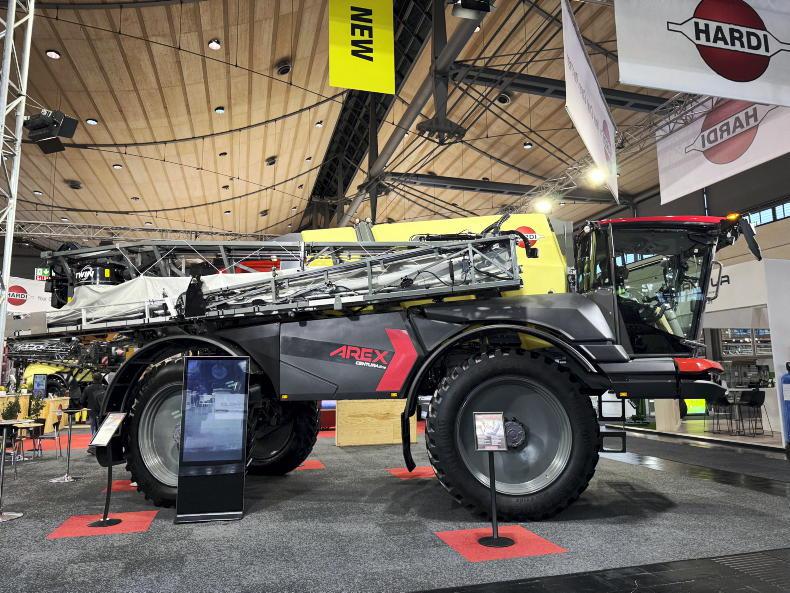
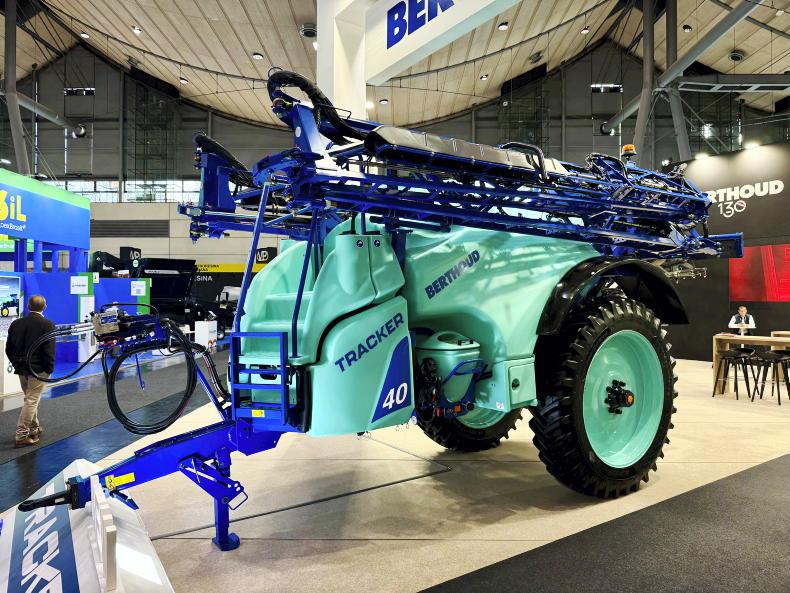
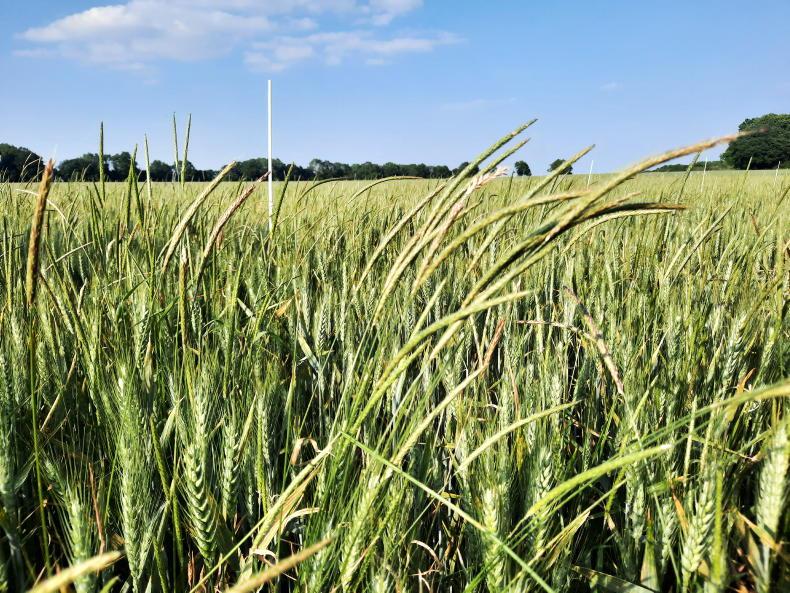
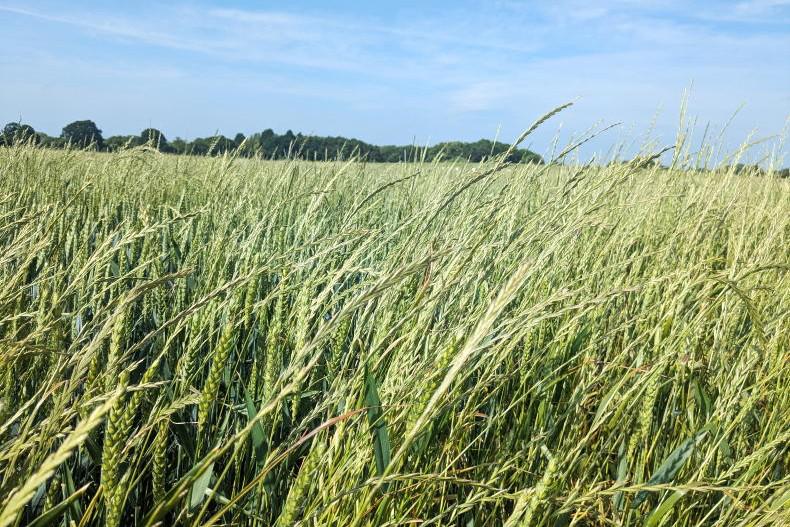
SHARING OPTIONS